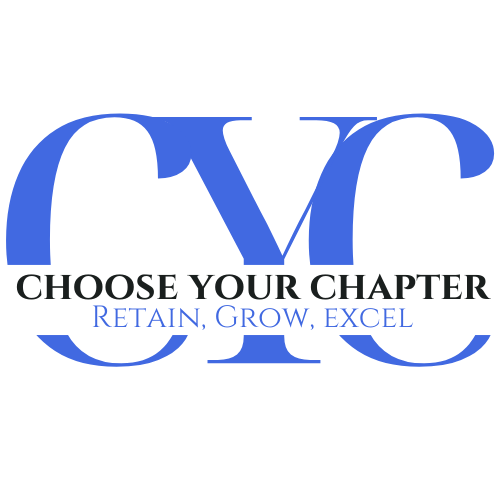“There are only three measurements that tell you nearly everything you need to know about your organisations’ overall performance: employee engagement, customer satisfaction and cash flow. It goes without saying that no company, small or large, can win over the long run without energized employees who believe in the mission and understand how to achieve it.”
Jack Welch, Former CEO of GE
At CYC we like to use the phrase “The Who is the Glue“, in other words, the people are what makes an organisation great and what hold it together. Whether it be a sporting team, a corporation or simply, family.
To ensure success we find that team engagement develops and increases self-efficacy, productivity and profitability. However, there are factors which can decrease these important elements, especially in sport and business. Two such factors are staff (or player) turnover and sick leave.
Below is a table representing staff leave and staff turnover in a business environment.
Leave is considered: sick leave, work place injury, stress and mental health leave. This does not include maternity leave or long service leave. Based on an average of 13 days per annum.
Turnover experts suggest it costs between 100-150%* annual salary to replace an employee. The table below represents a company with a 15% annual staff turnover, which is considered a highly functioning employee focused organisation. On average most organisations’ will have a 25-40%* annual staff turnover.
The table below represents a CYC target to reduce annual sick leave by two days and an annual turnover reduction of 2%. In most cases CYC will endeavour to achieve a 5-10% reduction in turnover.
| Staff | 50 | 500 | 2000 |
| Ave Salary | $75k | $75k | $75k |
| Pre CYC | |||
| Leave (Sick, injury, stress) | 13 days pa (@$350pd) | 13 days pa (@$350pd) | 13 days pa (@$350pd) |
| Leave Cost | $227k | $2.275m | $9.1m |
| Turnover 15% | 7.5 staff | 75 staff | 300 staff |
| Turnover Cost 100-150% Salary | $562k – 844k | $5.625m – 8.437m | $22.5m – 33.75m |
| Post CYC | |||
| Leave (Sick, injury, stress) | 11 days pa (@$350pd) | 11 days pa (@$350pd) | 11 days pa (@$350pd) |
| Leave Cost | $192k | $1.925m | $7.7m |
| Leave Saving | $35k | $350k | $1.4m |
| Turnover 13% | 6.5 | 65 | 260 |
| Turnover 100-150% Salary | $487k – 731k | $4.875m – 7.3m | $19.5m – 29.25m |
| Turnover Saving | $75k – 112k | $750k – 1.125m | $3m – 4.5m |
| Total Saving | $110k – 147k | $1.1m – 1.475m | $4.4m – 5.9m |
Turnover
Consider the Sydney Roosters 2018 NRL campaign. This was the first year players like Cooper Cronk and James Tudesco started at the club. It was obvious it took them months to ‘gel’ as a team. The team couldn’t rely on what previous players had done. They had to re-learn what it’s like to play with new players. This happens in all clubs, in all sports. New players coming to a side will take time to blend in, to understand each others skills and abilities.
This is similar in business when you consider how long it takes a new employee to fit into an organisation. There are costs in recruitment and training. How long does it take to fill the position? Ho much training will they require? How long until the new employee is as efficient as the previous? It can cost an organisation a years salary to replace someone.
Staff turnover is relative to culture and engagement. Improve the culture, increase engagement… reduce turnover.
Sick Leave
Similarly teams and organisations are often disrupted by “sick” leave and in a sporting world, injuries. The solution is not ‘don’t get sick’, or ‘don’t get injured’, we want to look at how this impacts other players and staff. The point is, how much of a disruption it may cause. Sports teams attempting to run team drills and training are thrown into disarray and often make a mess of team plans.
Imagine how much it effect a business.
When employees are off sick, someone needs to cover the workload, or the workload is delayed – how does this effect your productivity and profitability? How are your clients with these delays?
More importantly, how does it influence the existing players and staff who have to pick up that workload?
How does a player feel when they train in a certain position all week, only to be sent to the bench upon return of the injured? It will effect them emotionally and psychologically.
How does an employee feel when they have to double their workload, or finish someone else’s report, or stay back extras hours to ensure a project is completed on time? It will effect them emotionally and psychologically.
In both instances the team disengages. Players look to change clubs. Employees are less productive, less efficient and often end up taking more sick leave themselves.
Of the 13 average sick days someone may use per year, how many do you believe are they actually sick?
Sick leave can also be relative to culture and engagement. Improve the culture, increase engagement… reduce sick leave.
Prevention/Solution
Become a strengths based organisation.
Gallup, one of the worlds biggest research companies suggest strengths based teams may achieve:
- a 240% boost in performance
- six times more engagement
- seven times more happiness
When is the best time for your team to focus on their strengths?
For more information contact us below or to find out more about our programs for athletes click here. If you are a manager or business owner looking to develop a strengths based organisation, we will tailor a program to suit your needs, simply ask us how.
*Disclaimer – The CYC and Focus On Your Strengths concepts are entirely developed by Choose Your Chapter and are NOT products of Gallup®, Inc nor the Clifton StrengthsFinder ®. We would like to acknowledge Gallup and the CSF for their data and research tool which allows us to help spread the word to focus on our strengths. Clifton StrengthsFinder ® and StrengthsFinder ® and each of the Clifton StrengthsFinder theme names are trademarks of Gallup, Inc. Choose Your Chapter are not affiliated with Gallup, Inc or its subsidiaries.
Copyright © 2000, 2006-2012 Gallup, Inc. All rights reserved.

